Sometimes when you select a cell in an Excel dataset that has data validation enforced, a yellow box pops up with certain information.
What is that yellow box in Excel?
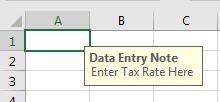
The yellow box with information that appears when a cell is selected is a data validation input message. It is a custom message designed to help those who use the worksheet to enter data into the worksheet correctly. It is part of data validation which is a feature in Excel that is applied to control what data a user can enter into a cell.
We can use data validation input messages for example to instruct data entry personnel to enter numeric values in a cell that are within a given range, text entries that are less than a certain number of characters, or dates that occur within the next certain number of days.
How to create data validation input message
When we create worksheets that other people will use, it is important to set up data validation input messages that will make it easy for them to understand what to do with the dataset.
To set up a data validation input message that pops up when a cell is selected in Excel we use the followings steps:
- Select the cell in which we want to enforce data validation.
- Choose Data >> Data Tools >> Data Validation on the Ribbon to launch the Data Validation dialog box:
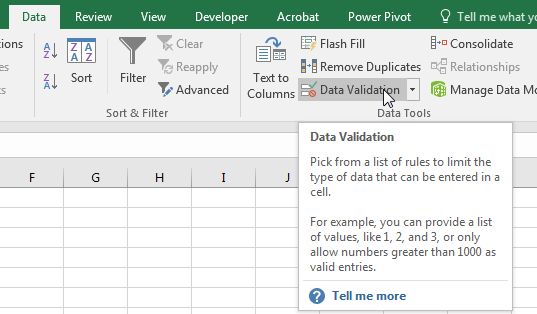
- Click on the Input Message tab, put a checkmark in the checkbox next to Show input message when cell is selected:

- Type in the title for the input message in the Title box, type in the data validation input message we want to be displayed when the cell is selected in the Input Message box, and click OK:
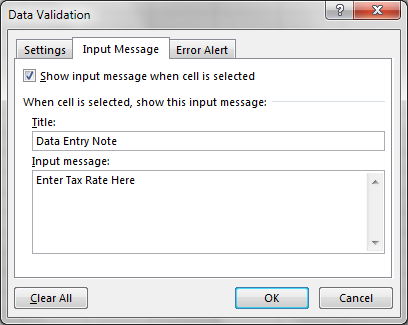
The Input Message in the yellow box appears when we select the cell in which we are enforcing data validation:
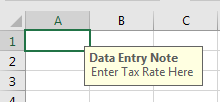
How to edit or change the data validation input message
Sometimes when situations or circumstances change, we may want to edit or change the validation input message.
We use the following steps when we want to edit or change the validation input message:
- Select the cell which has the data validation input message.
- Choose Data >> Data Tools >> Data Validation from the Excel Ribbon:
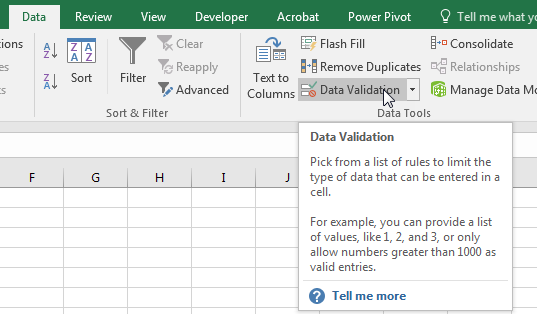
- In the Data Validation dialog box, make the needed changes or edits in the Title box and /or the Input message box and click OK:
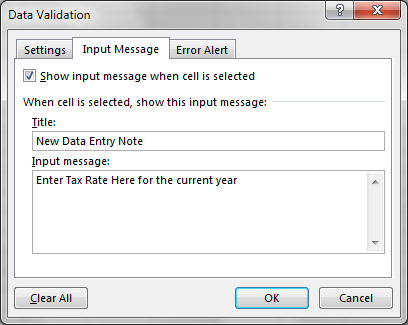
The updated data validation input message now appears in the selected cell:
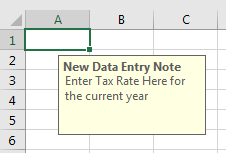
How to remove the data validation input message
Sometimes we may want to remove the data validation input message(s) from our dataset.
We use the following steps to achieve this:
- Select the cell from which we want to remove the data validation input message.
- Choose Data >> Data Tools >> Data Validation from the Excel Ribbon to launch the Data Validation dialog box:
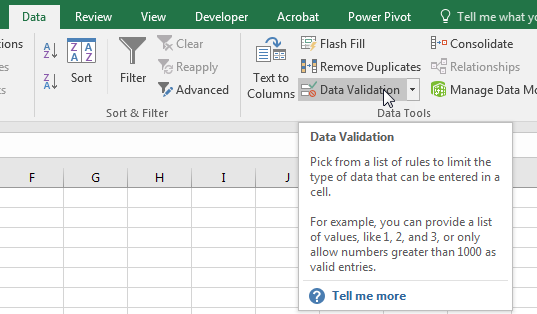
- Click the Clear All button in the Data Validation dialog box and then click OK:
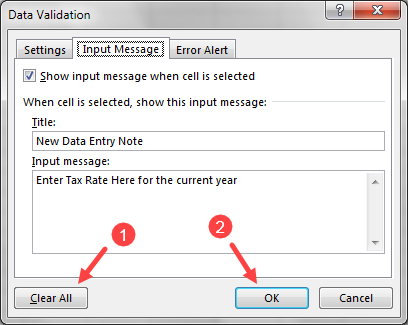
When we now select the cell the data validation message no longer appears because it has been removed.
Sometimes we do not want to remove the data validation input message but just stop it from showing when the cell. We use the following steps to achieve this:
- Select the cell in which we want to stop the input message from showing.
- Go to Data >> Data Tools >> Data Validation on the Excel Ribbon to launch the Data Validation dialog box:
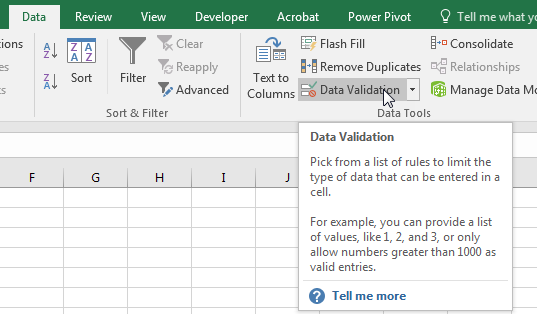
- Remove the checkmark from the checkbox next to Show input message when cell is selected and then click OK:
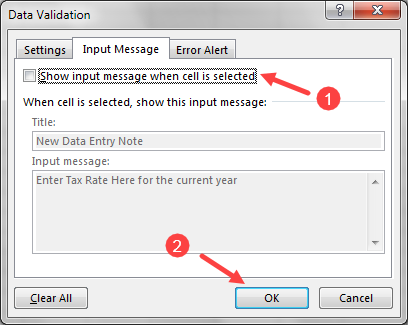
The data validation input message no longer shows when the cell is selected.
Additional information
The input message size cannot exceed 255 characters. The size of the message box is set by Excel and cannot be changed.
Location of data validation input message
Generally, the input message box appears below the cell with the left border in the middle of the cell’s width:
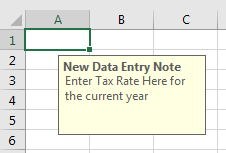
The input message however can appear in different positions around the cell depending on the location of the cell and whether it contains a comment:
- If the cell is close to the right border of the Excel window, the right edge of the input message will begin at the border of the Excel window:
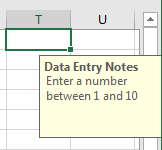
- If there isn’t sufficient space below the cell or to the right of the cell, the input message will appear at the top of the cell:
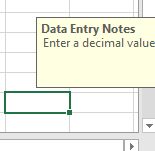
- If there isn’t enough space below the cell or to the left side of the cell, the data validation input message pops up to the right of the cell:

- If the cell has a comment, the input message appears below the cell with its right border in the middle of the cell’s width:
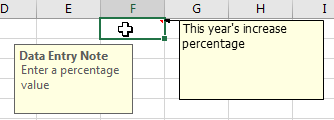
- If the cell has a comment and there isn’t enough space on the right, the data validation input message is chopped off. This problem generally occurs in cells that are in Column A:
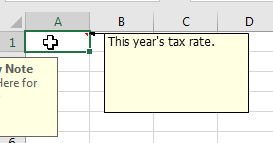
Moving the data validation input message
When the data validation input message pops up, we can drag it to a different location on the worksheet, though temporarily:
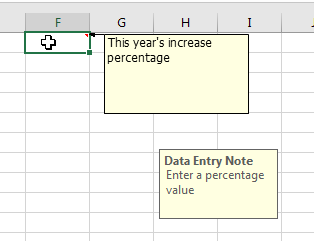
All the data validation input messages in the worksheet will move to the temporary new location.
When we close and reopen the worksheet, the data validation input messages will return to their original locations.
Conclusion
In this tutorial, we have learned that the yellow box with information that sometimes pops up when we select a cell in a dataset where data validation is enforced is a data validation input message. It is a custom message designed to instruct those who use the worksheet to enter data into the worksheet correctly. It is part of data validation which is a feature in Excel that is applied to control what data a user can enter into a cell.
We have looked at how to create the data validation input message, how to change or edit the data validation message, and how to remove the data validation message.
We looked at the different factors that can change the location of the data validation message in the worksheet. The factors include whether the cell has a comment or sufficient space on the right side, left side, or at the bottom of the cell. We can also temporarily move the data validation input messages to a different location in the worksheet.
